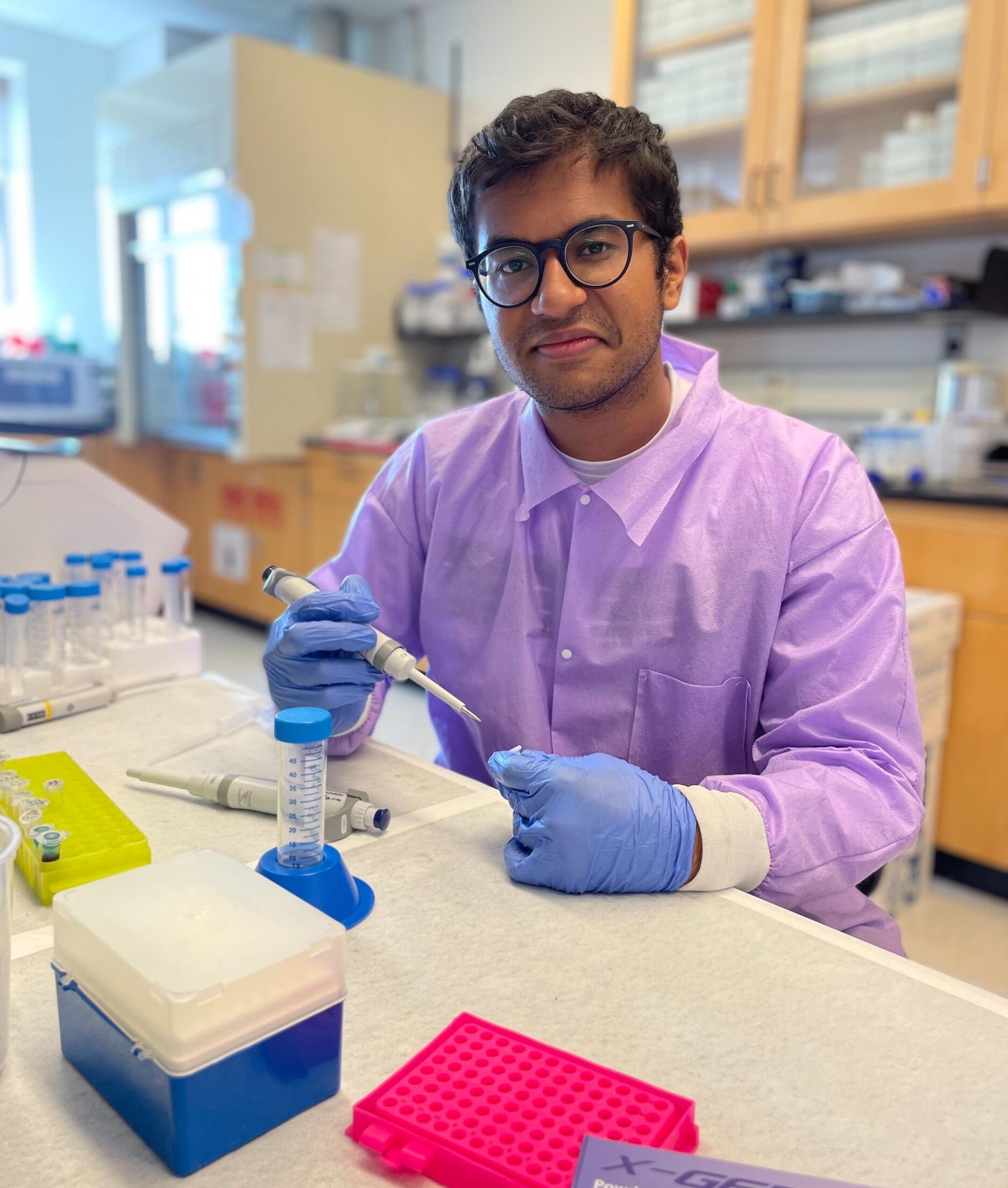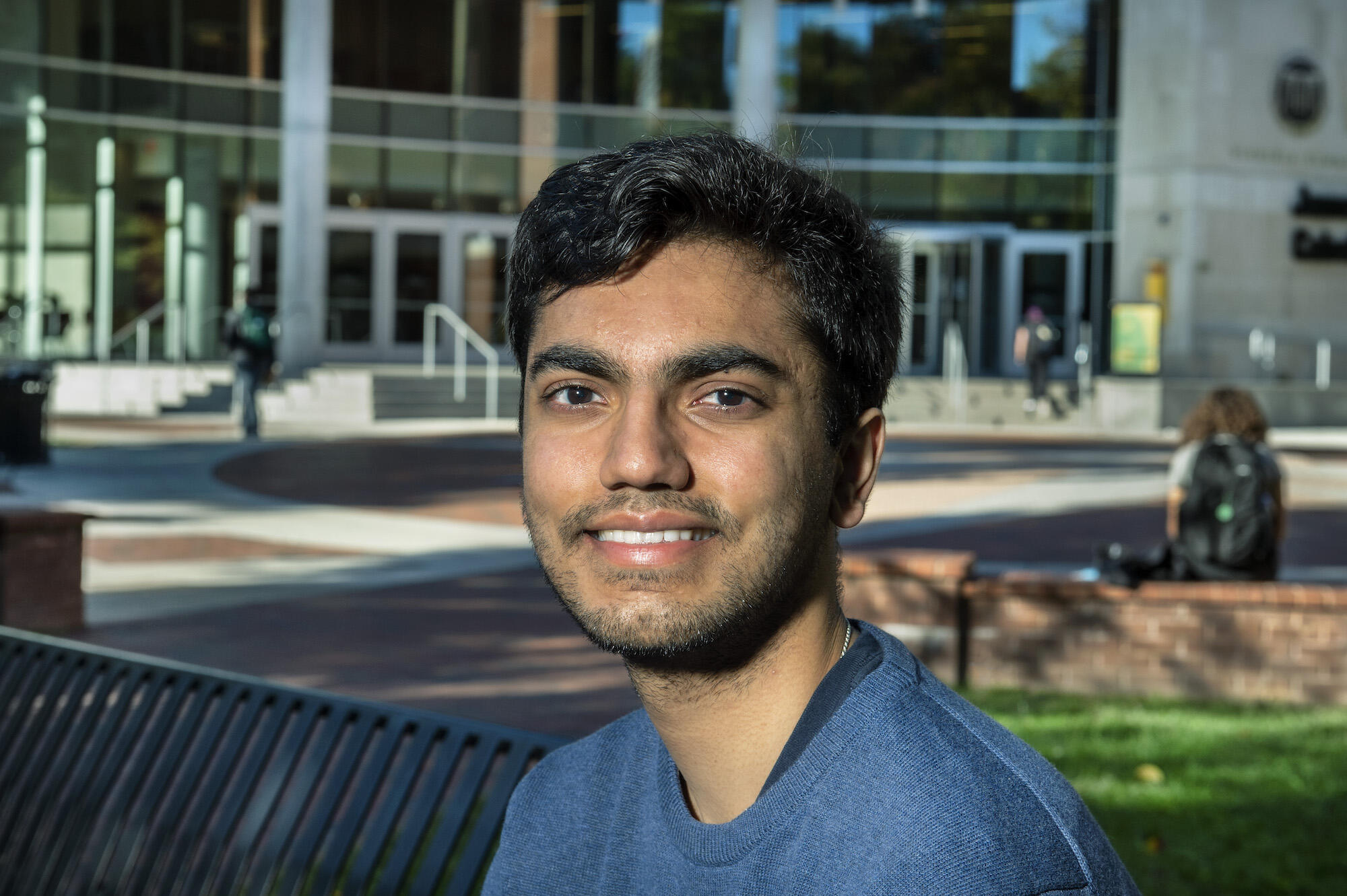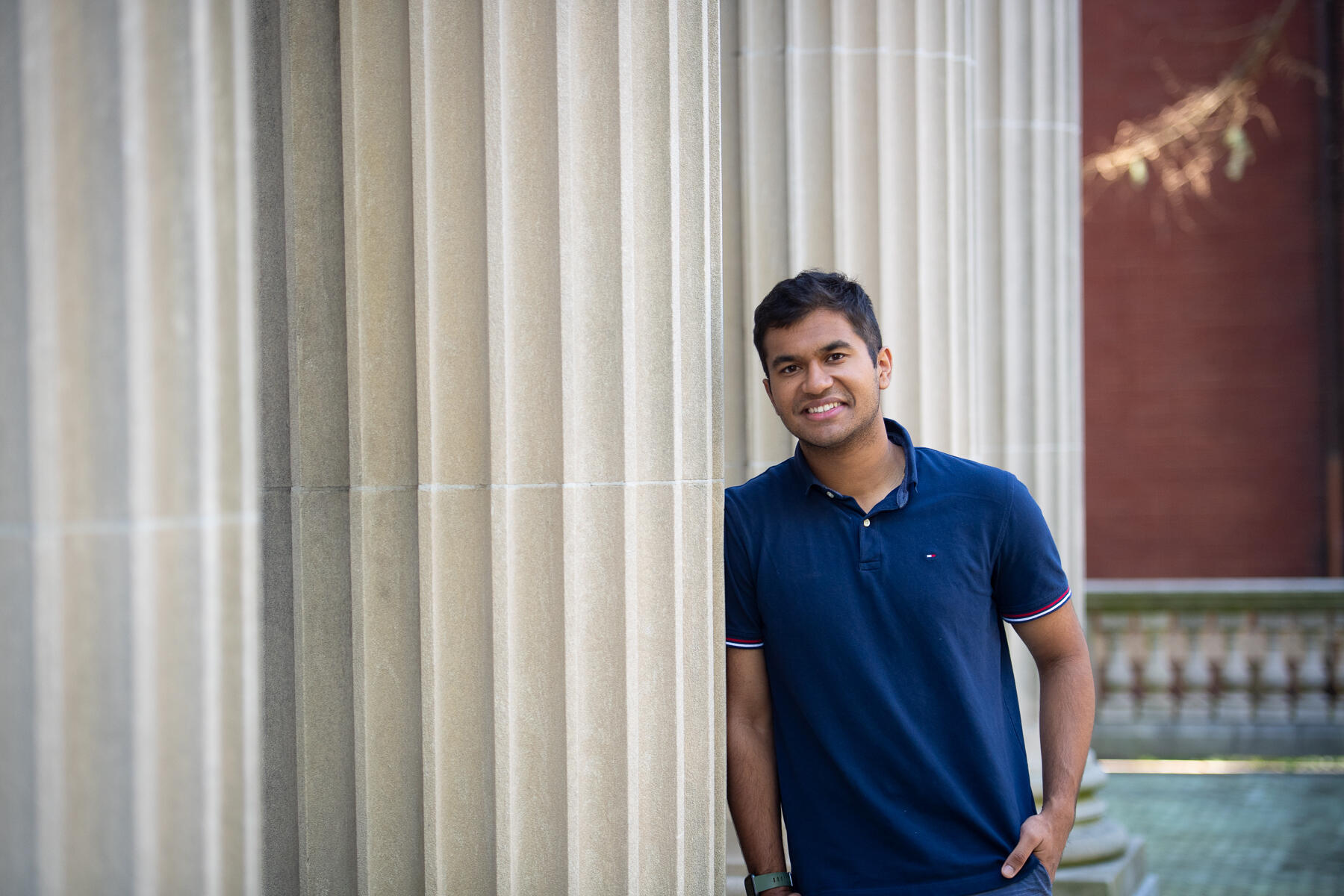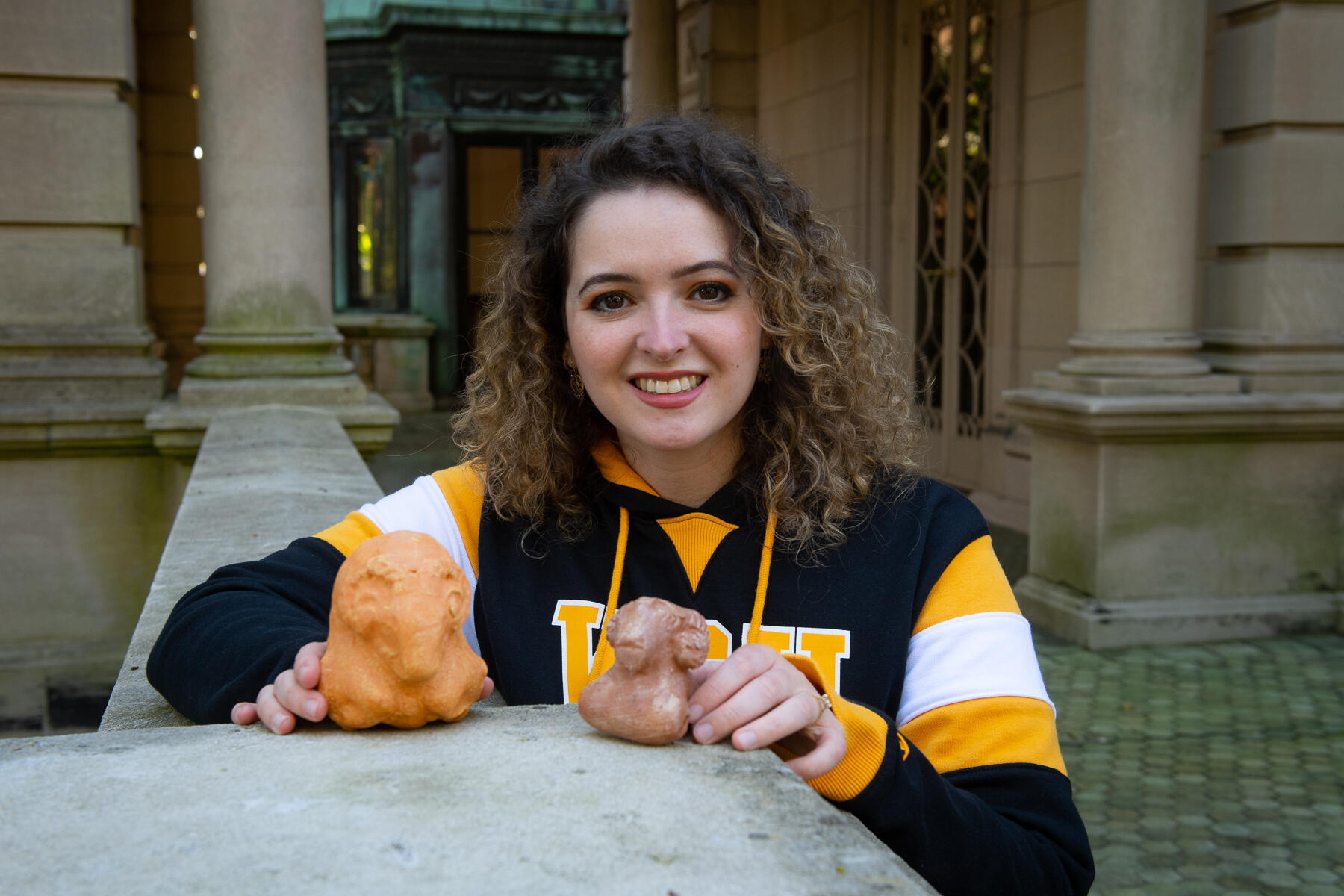
Oct. 25, 2021
From red cell development to cultural preservation, VCU’s Baldacci scholars continue to further their studies
Share this story
Biology majors Sivam Bhatt and Anubhav Thapaliya have expanded their knowledge of zebrafish since working in the lab of Erich Damm, Ph.D.
Their research into the role that specific genes play in zebrafish development and blood stem cell generation wouldn’t have been possible without Baldacci Student Experiential Learning Endowed Fund grants to further their studies.
The fund was created from a gift to Virginia Commonwealth University in 2017 by bestselling author and VCU graduate David Baldacci and his wife, Michelle. Grants of up to $5,000 are awarded to academically promising rising juniors and seniors from diverse areas of study and backgrounds.
During Bhatt’s time in the lab, he curated a list of hundreds of genes to figure out what each does and where it is located in zebrafish as well as what diseases are associated with defects in the gene.
Zebrafish are often used in this type of research because they are vertebrates, so results from the research have a direct relevance for humans.
“When you are looking at red blood cell development, zebrafish can model how red blood cells form in humans,” said Bhatt, a junior. “We are trying to figure out how to recognize a specific protein and how it correlates with red blood cell development.”

He has been working with zebrafish embryos that have different gene mutations.
“The genes are activated at different times,” he said. “Certain red blood cell development occurs at different stages of the embryo.”
Zebrafish lay their eggs in the water and embryos develop very quickly.
“You can collect thousands of embryos,” said Damm, an assistant professor in the Department of Biology in the VCU College of Humanities and Sciences.
Research is important to the medical field
Thapaliya, a junior, has been studying the role of two different genes — nrf2a and Dera — in red blood stem cell and zebrafish development. Using the zebrafish in the study of red blood stem cell development can segue into other research models, he said.
“If you look at the bigger picture, it will help with stem cell development,” he said. “It is integral to biomedical research. We can understand how we can advance bone marrow transplantation. It’s important to understand genes and the factors that come into play.”
The Baldacci grant has provided him the opportunity to apply the classroom biology in a lab setting. “I actually got to do technical procedures like … cloning and in-situ hybridization — techniques that I had only read about before,” he said.
Thapaliya wants to go into medicine, specifically orthopedic surgery, after graduation.
“As a physician, it’s important to have an understanding of basic research that is happening, especially in the wet lab. Evidence-based medicine is fueled by science at its core,” he said. “I have a greater appreciation of all the research being done with the goal of patient care.”

The process of troubleshooting, like he does in his research, is essential to the medical field, he said.
“In medicine, you have someone come in with symptoms and you are supposed to perform a diagnosis. It’s all about troubleshooting and moving forward. The lab is parallel to that skill set of resiliency,” he said.
Both Bhatt and Thapaliya have a strong interest in studying problems related to medicine, Damm said.
“Both are very motivated,” Damm said. “I show them how to do something once and they can go ahead and do it themselves.”
Raising awareness of a culture through 3D scans
Amelia Sunnen, a VCU senior and Baldacci grant recipient, is working in Bernard K. Means’ Virtual Curation Laboratory.
A self-supporting, nontraditional student, Sunnen — an anthropology major with minors in biology, French and Spanish — is working with 3D scans of artifacts important to the cultural heritage of Uttarakhand, a state in India.
“These are replicas of artifacts that can be thousands of years old,” she said. “In addition to keeping the artifacts safe from damage, another advantage of using only 3D-printed replicas of the Uttarakhand artifacts is that the original artifacts stay in what we call the ‘source community’ — the community to which the cultural heritage belongs. I’m really proud to be part of an ethical archaeology project like that.”
The scans of the replicas were made in partnership with Hemvati Nandan Bahuguna Garhwal University over five research visits by Means.
“The goal of our partnership is to raise awareness of Uttarakhand's heritage on a global level,” said Means, Ph.D., an assistant professor of anthropology in the School of World Studies in the College of Humanities and Sciences.
Uttarakhand's heritage is at risk due to rampant development and climate change exacerbated by human actions, Means said.
“By raising awareness to this heritage, and threats to this heritage, HNB Garhwal University wants to show that the cultural legacy of north India is worth saving,” he said. “The current pandemic has shown why virtual techniques — such as 3D scanning and 3D printing — are important to sharing this heritage that is important locally in north India but globally as well.”
This summer, Sunnen used the artifacts to create educational materials that would meet requirements for the Virginia Standards of Learning.
“Hopefully, the materials will be used in schools in fall 2022,” she said.

Sunnen will have a chance toward the end of this semester to try out the educational lessons and hands-on activities with a small group of home-schooled students.
“I was a home-schooled student from kindergarten through 12th grade,” she said. “I empathize with people outside the mainstream. I am interested in serving that population.”
Sunnen made students a 3D-printed mold of artifacts so they can have a tactile interactive experience. She also hopes to incorporate more about the culture and daily life of the people Uttarakhand into the lesson plans.
“I want to diversify the information for students,” she said.
Experiential learning opportunities like these are a key part of the Baldacci grant program, said Jennifer Malat, Ph.D., dean of the College of Humanities and Sciences.
"VCU students often forgo impactful but unpaid learning opportunities in favor of paid work. Scholarships that support experiential learning, like the Baldacci Student Experiential Learning Fund and others like it in the college, are essential for students seeking opportunities to expand their learning outside of the walls of the classroom,” Malat said. “For the thousands of students in the college who participate in these hands-on experiences, the opportunity can be truly transformational.”
Subscribe to VCU News
Subscribe to VCU News at newsletter.vcu.edu and receive a selection of stories, videos, photos, news clips and event listings in your inbox.







